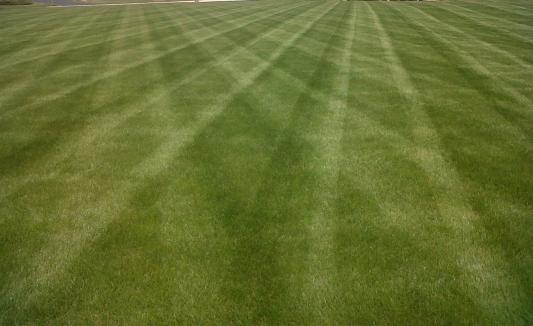Several parts of the United States experienced some fairly severe heat waves this summer. While the conditions thankfully didn’t match those of 2012, which was drought filled, many lawns likely burned out or were damaged by natural occurrences such as hot weather, lawn diseases, or insects.
As fall approaches, it brings along with it a perfect opportunity for those who’ve experienced damaged lawns to repair those areas and prepare their grass for a green-filled spring season. Favorable fall weather conditions paired with a lack of weed presence offer the ideal time to perform a lawn renovation. Let’s walk though a few tips that we believe are critical to bringing your lawn back to life.
Checking for signs of damage: Most of the common signals of a damaged lawn can be observed by the lawn manager using their senses. While walking, damaged or unhealthy grass will likely feel soft and spongy. Additionally, if the grass is responding poorly to watering applications it may also be damaged. There are three signals available to the naked eye that indicate it’s time for a renovation, including: excessive thatch (more than ½ inch) appearing in the soil, excess of weeds such as dandelions or crabgrass, and 20-25% of the lawn is bare or covered with these weeds. If your lawn possesses a combination of these symptoms, it may be time to get to work.
Preparation before Seeding: When the decision has been made to renovate, a few steps need to be taken before fertilizer and seed should be applied to the soil. First, eliminate any of the existing weeds and excess thatch in the lawn. Next, moisturize the soil with 6-8 inches of water to restore to healthy levels (especially after a long, hot summer). Lastly, be sure to properly aerate (3-5 times) to prepare the seed bed.
Fertilize the Lawn: After aeration has occurred and the seed bed has been properly prepared, it’s time to fertilize. Fertilizers should be spread evenly throughout the damaged area in an effort to expedite the establishment and growth rate processes of the emerging lawn.
Seed the Lawn: Next, divide the area to be seeded into a few sections to promote different seeding directions, ensuring the soil is being hit from various angles. Next, begin seeding in two directions, overlapping halfway through the process. After seed has been applied, irrigate the lawn to promote soil and seed contact, followed by watering twice a day. Be sure to not over-water, the soil shouldn’t appear to be soggy.
Mowing: After green grass has been established and has taken hold (reaching about 3-4 inches in height), begin regular mowing processes and enjoy your newly flourishing lawn!
If your lawn has been damaged for any number of reasons, the fall season is a perfect time for repair. Fire up your lawn maintenance equipment, and follow these steps towards a successful fall lawn renovation. So, revitalize your lawn and get it back to being the talk of the neighborhood!
If you enjoyed this post or have some tips of your own to share, feel free to connect with us on Facebook!
